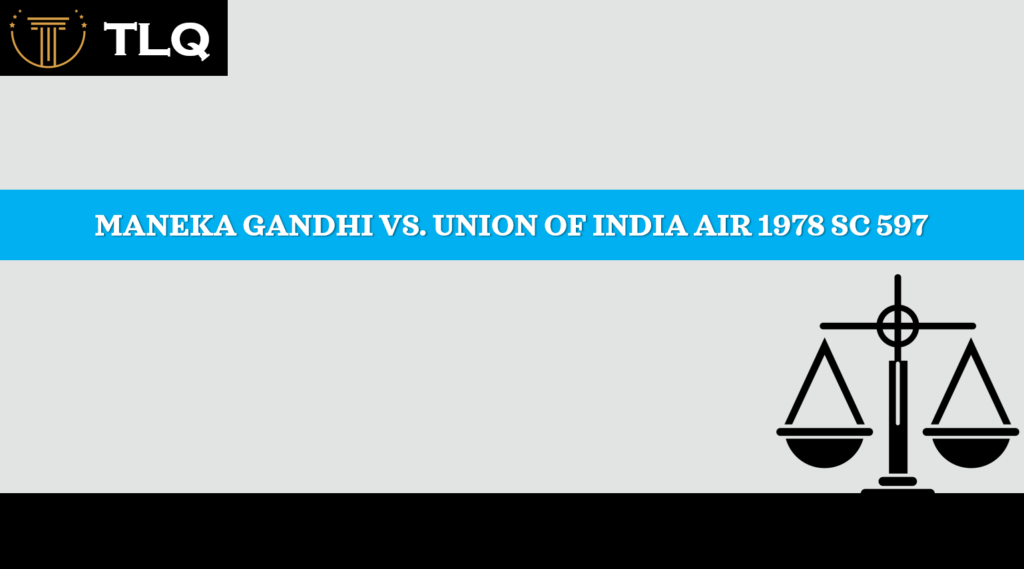Published On: August 10th 2025
Authored By: Parth Attry
UILS, Chandigarh University
ABSTRACT
Custodial death is one of the cruelest forms ever known to humans. This is a severe example of institutional failure and systematic violence. These Acts raise questions of accountability and the effectiveness of law and order. This article explores the constitutional safeguards available for detainees and their ground-level challenges. This article also delves into urgent needs of reforms to protect the rights to life and human dignity prescribed by the constitution through an analysis of landmark judgments like DK BASU VS STATE OF WEST BENGAL and NILABATI BEHRA VS STATE OF ORISSA, to guarantee justice and preserve constitutional values.
INRODUCTION
Custodial death refers to the death of an individual while in police custody or prison. This occurs in police stations, lockups, or within a prison system. And can be attributed to various factors, including the use of force, suicide, or natural death. Every year, 100s of fatalities are reported by NHRC. There is a statistical report that was gathered by the NHRC from 2017 to 2022
REPORTED CASES-From April 2017 to March 31, 2022, in India, there were 699 total Deaths in police reports so far. The annual breakdown is as follows:[1]
- 2017-2018: 146 deaths
- 2018-2019: 136 deaths
- 2019-2020: 112 deaths
- 2020-2021: 100 deaths
- 2021-2022: 175 deaths
In different states, different numbers of deaths were reported – Gujarat with the highest number of custodial deaths (80) over the past five years, followed by Maharashtra (76), Uttar Pradesh (41), Tamil Nadu (40), and Bihar (38).
CONSTITUTIONAL AND LEGAL SAFEGUARDS
Keeping in view the increasing rate of custodial deaths and rising atrocities against prisoners, the Constitution and the Supreme Court of India have provided legal safeguards. [2]
- Article 20(3)- Provided that it protects individuals from being compelled to be witnesses against themselves in criminal proceedings. The accused has the right to remain silent and did not disclose his defence before trial.
- Article 21- it guarantees that no person shall be deprived of their life and liberty except according to the procedure established by law. A proper method needs to be followed in the process of investigation to trial. The Supreme Court also held that custodial torture is a violation of rights.
THE BHARTIYA SAKSHYA ADHINIYAM
- Section 22 – provided that any confession made by an accused person is irrelevant in a criminal procedure if it is obtained by the police by any inducement, threat, coercion, or any promise made to the accused to avoid any evil of a temporal nature.
- Section 23 – Provided that any confession made to a police officer is inadmissible in court as evidence, and that confession cannot be produced as evidence by the prosecution in court. Recoveries are not permitted to be procured through torture.
THE BHARATIYA NAGARIK SURAKSHA SANHITA
- Section 43(4) and 46 – A detainee who is not accused of an offence punishable with death or imprisonment for life cannot be subjected to more restraint than is necessary to prevent his escape.
- Section 53 – It extends safeguards against custodial torture and violence by mandating the medical examination of arrested persons.
- Section 196 – It provides the provision of the compulsory inquiry by the magistrate in the matter of the death of a person in custody.
- Section 399 – provides for compensation to persons groundlessly arrested.
POLICE ACT, 1861
- Section 29 – Every police officer who shall be guilty of any violation of duty or wilful breach of any rule or regulation or lawful order made by competent authority, or shall offer any unwarrantable personal violence to any person in his custody shall be liable, on conviction before a Magistrate, to a penalty not exceeding three months pay, or to imprisonment with or without hard labour for a period not exceeding three months, or to both.
JUDICIAL INTERVENTION AND LANDMARK CASES
- DK BASU VS STATE OF WEST BENGAL – In this landmark case Supreme Court has given certain guidelines to prevent custodial deaths, torture, unlawful arrest, and retention. These guidelines revolve around the Article 21 right to life and its establishment. The court mandated that the police officer making the arrest should be wearing a clear identification and record the arrest in a register, and also have the arrest memo with them at the time of the arrest, signed by the arrestee and a witness, and include the date, time, and place of arrest. The arrested person must be allowed to inform a friend or relative about their arrest, and this should be noted in the police records. A doctor must check them at the time of arrest and every 48 hours while in custody. They also have the right to meet a lawyer during questioning. Details of the arrest must be shared with the nearest police control room within 12 hours.[3]
- NILABATI BEHERA VS STATE OF ORISSA – In this landmark case Supreme Court established the state’s responsibility for the death of Suman Lal Behera, son of Nilabati Behera, as he died in police custody. The Supreme Court ordered to compensate the individual for the violation of their fundamental rights to life and liberty, and it is held that the state must provide monetary relief as a constitutional remedy for such abuses, even if the death occurs in police custody. [4]
- KIDAR NATH VS STATE OF PUNJAB – The Court finds that there is a continuous practice of third degree in handling the suspect to obtain his confession, or clues related to the case, which is, in other words, called “sweating process”. This is more dangerous if done frequently. After considering this as a major issue, as this is the violation of one’s right to liberty, the Court ordered that, despite doing it with difficulty, it can be done through a detective process and appropriate personality standards.[5]
INSTITUTIONAL MECHANISMS AND ACCOUNTABILITY[6]
National Human Rights Commission- The Protection of Human Rights Act (1993) establishes the National Human Rights Commission, which is responsible for the protection of human rights in India. NHRC has an independent identity. It only works to make suggestions to the government but doesn’t have the authority to impose them. There are numerous cases of custodial death, including a notable one in West Bengal. In this type of case, NHRC made an offer of compensation and made a recordation, but because of its limited power, the implementation of the plan is done by the government. The NHRC can enforce regulations and hold a person accountable for torture and fatality in detention, but it was hampered due to collaboration with the federal and state governments. To protect human rights and close the gap of accountability gap for custodial deaths, it’s necessary to expand its power.
State Human Rights Commission- State Human Rights Commissions (SHRCs) are meant to be the first line of protection for citizens when their rights are violated by the police or prison authorities, especially in tragic cases like custodial deaths. Set up under the Protection of Human Rights Act, 1993, these bodies can step in on their own or after receiving complaints, investigate what went wrong, and recommend action, whether that means compensation for grieving families or holding officials accountable. They also have the power to visit police stations and jails to check conditions on the ground. But despite this authority, many SHRCs struggle. Their recommendations aren’t binding, they often lack funding and staff, and in some states, they barely function at all. This leaves many victims and families without real justice. To truly protect people’s rights, SHRCs need to be stronger, more independent, and better supported because justice shouldn’t depend on geography or politics.
GROUND LEVEL CHALLENGES[7]
When it comes to the ground-level challenge regarding custodial death in India, several of them are being faced by people in custody as well as by the institutions, as custodial death is the result of police brutality and intimidation towards detainees. Firstly, it is the direct violation of articles 20,21, and 22 of the Indian Constitution. In many cases like THE MATHURA RAPE CASE 1979 which exemplifies the custodial rape. police misuse their power to keep the person in custody and commit serious offences. There are many other cases of torture, rape, and intimidation. The other challenges, like fabricated encounters, the recent conviction of former Mumbai Police officer Pradeep Sharma by the Bombay High Court for his role in a 2006 fake encounter, mark a significant judicial milestone. On the other hand, institutions face several challenges, including the absence of strong legislation and a lengthy process for disposing of cases. This means that Lengthy and expensive legal procedures deter marginalized and vulnerable individuals from seeking justice for custodial abuses. Institutions like the NHRC and SHRC need to be empowered to implement their suggestions without government interference to address these challenges. These challenges have made a huge impact on the judicial system in India.
NEED TO REFORM: A WAY FORWARD[8]
Considering the situation of custodial death in India, institutions like NHRC and SHRC should be given the authority to address custodial deaths. A specific law related to the prevention of custodial violence has to be established by the legislation to reduce the cases against detainees in jails. This law will lay down the precise guidelines regarding all the offences. Parkash Singh’s police reform should be implemented in a strict sense. The impartial and prompt investigation of custodial torture needs to be done by other govt agencies and restrictions on the involvement of the local police in the investigation. Civil societies, like small government institutions, panchayats, and other social working institutions, should be encouraged to advocate for the victims of custodial death, and international laws related to human rights need to be followed strictly. As there are lengthy processes in the disposal of any civil or criminal case, independent disciplinary and competent authorities have to be established to strengthen the judicial system (other than the police complaints authority). The government should procure police reform by enhancing its training programs to emphasize respect for human rights. And dignity to promote the culture of accountability and professionalism, empathy within law enforcement. Local magistrates should exercise caution when granting police or judicial custody, as it seems to be a routine practice, but should be an exceptional measure. They are the ones who see all arrested and detained individuals within 24 hours, making them the first line of defence in upholding the rule of law.
CONCLUSION
Custodial death represents a grave infringement of human rights and a huge failure of institutional mechanisms made to uphold justice and dignity. Despite constitutional safeguards and precedents meant to protect the rights of detainees, the reality we see on the ground level tells a different story, one of abuse, and the second is a broken system.
Judgements like DK BASU VS STATE OF WEST BENGAL, NILABATI BEHERA VS STATE OF ORISSA, and KIDAR NATH VS STATE OF PUNJAB laid down a precise and strong principle to prevent such abuse, yet their implementable is not properly done. Still, there are many cases that are pending in the court and waiting for justice. There are still many victims of custodial torture who those not been recognised. Families who lose their loved ones in the custody are often left with no answers, no closure, and no justice. Institutions like the NATIONAL HUMAN RIGHTS COMMISSION and the STATE HUMAN RIGHTS COMMISSION, though created by the government to uphold fundamental rights, often lack the power or support to make a real difference.
We must go beyond laws on paper. India needs dedicated laws and provisions against custodial torture, strong oversight bodies with real authority, and independent investigation other than the government. Conducted, which leads to the failure in the first place. Police reforms are holy and focused, not only on discipline but also on empathy and accountability. Civil societies, local communities, and magistrates must also play an active role in safeguarding rights. Justice is not just a privilege; it is a right for everyone, as we live in a democratic country where everyone is equal. Protecting the dignity of life for every individual, even in custody, is the true test of a democracy.
REFERENCES
[1] Chinmaya IAS Academy, ‘Custodial Deaths in India’ (Current Affairs Chinmaya IAS Academy, 3 February 2023) https://currentaffairs.chinmayaias.com/custodial-deaths-in-india/
[2] Virender Negi and Monika Negi, ‘The Role and Response of Judiciary in Prevention of Custodial Crimes in India: An Analysis’ (2021) 7(4) International Journal of Law 188–194 https://www.lawjournals.org/assets/archives/2021/vol7issue4/7-4-41-320.pdf
[3] Ipleaders, ‘D.K. Basu v. State of West Bengal (1997) – Case Analysis’ (iPleaders, 28 April 2020) https://blog.ipleaders.in/dk-basu-vs-state-of-west-bengal-1997-case-analysis/
[4] Custodial Death in India – Legal Implications & Insights (Dhyeya Law, n.d.) https://www.dhyeyalaw.in/custodial-death-in-india
[5] Virender Negi and Monika Negi, ‘The Role and Response of Judiciary in Prevention of Custodial Crimes in India: An Analysis’ (2021) 7(4) International Journal of Law 188–194 https://www.lawjournals.org/assets/archives/2021/vol7issue4/7-4-41-320.pdf
[6] Pankaj Katiyar, “Torture and Custodial Deaths: Role of the Indian Judiciary and National Human Rights Commission in Building Human Rights Jurisprudence” (2025) 7(3) International Journal for Multidisciplinary Research https://www.ijfmr.com/papers/2025/3/47313.pdf
[7] Akai Negi, “Examining Custodial Death: Challenges and Calls for Accountability” (Drishti Judiciary, 13 May 2024) https://www.drishtijudiciary.com/blog/examining-custodial-death-challenges-and-calls-for-accountability
[8] Need for Stricter Measures in Custodial Deaths (Drishti IAS, 16 April 2024) https://www.drishtiias.com/daily-updates/daily-news-analysis/need-for-stricter-measures-in-custodial-deaths




